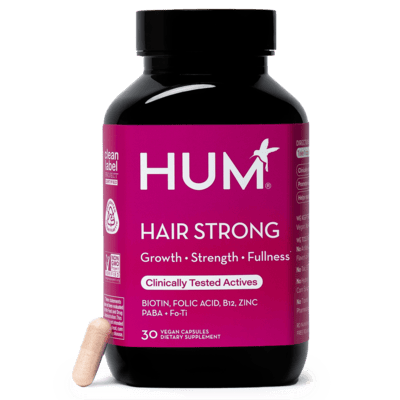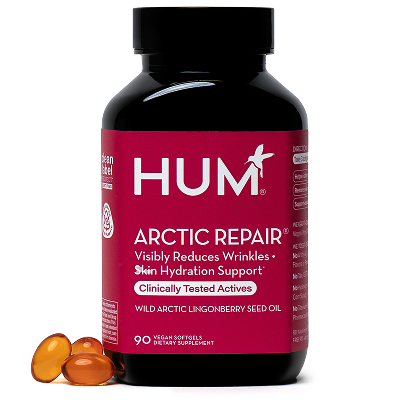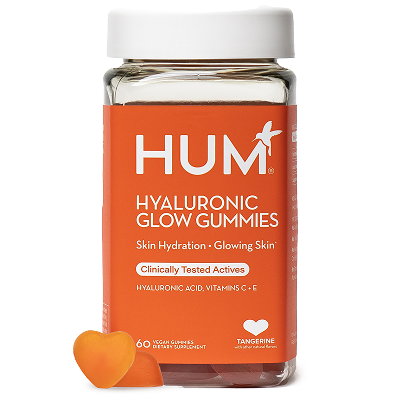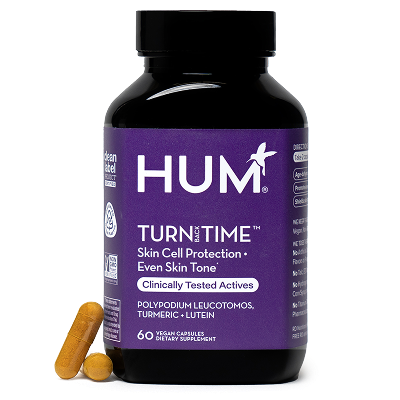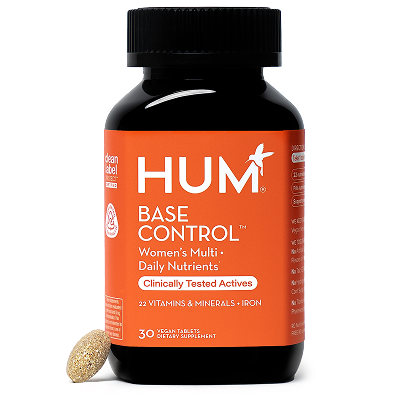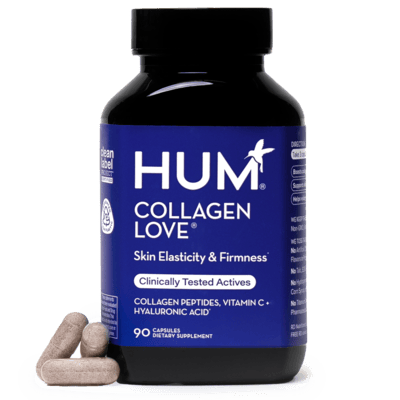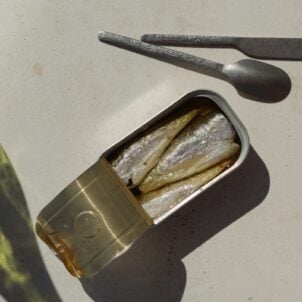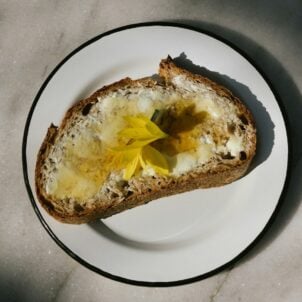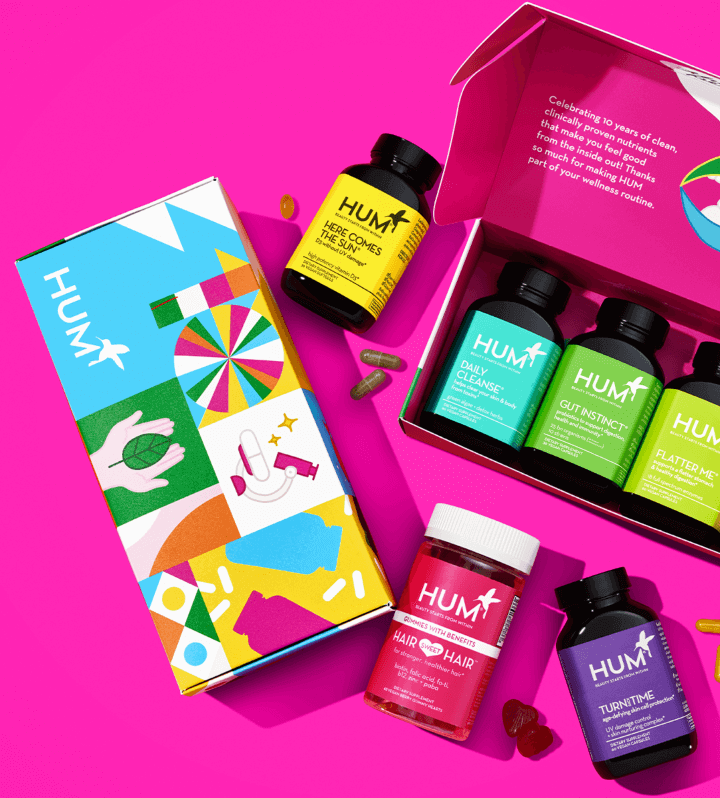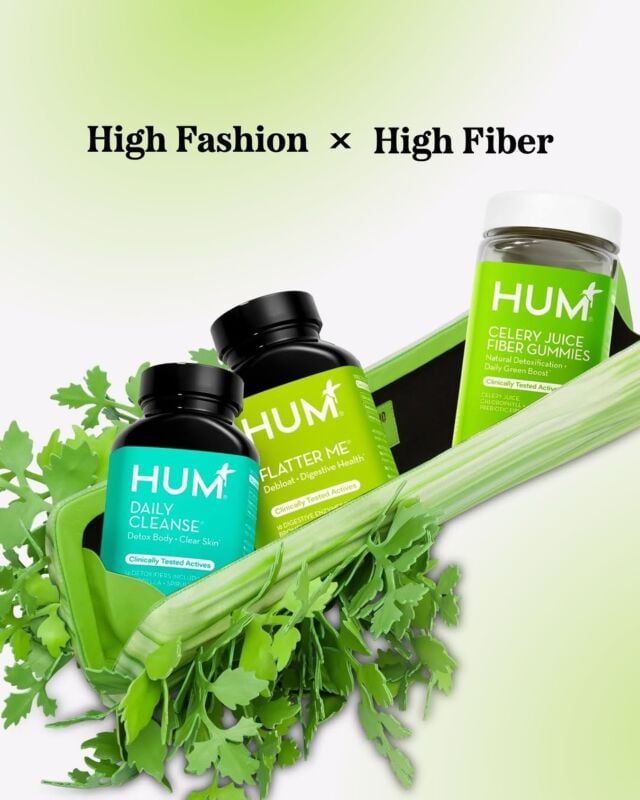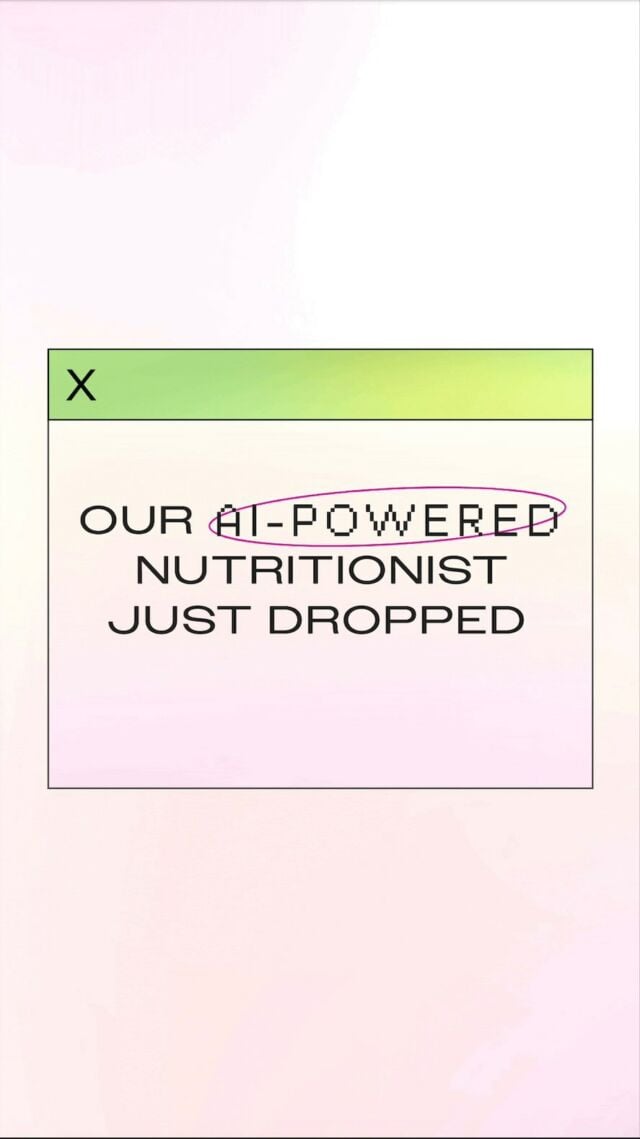Add These 7 Fall Foods and Supplements to Your Meals for Healthy Hair, Skin, and Nails
How to identify if you could benefit from a supplement.
7 Fall Foods for Healthier Skin, Nails, and Hair
Their key nutrients help combat beauty concerns like brittleness and dullness.

There’s no denying that a healthy, well-rounded diet helps keep every part of your body, well, healthy—and that includes your skin, hair, and nails. The opposite is also true. “Lacking key nutrients like protein, healthy fats, vitamins, and minerals can leave them looking dull, brittle, or weak,” says Roxana Ehsani, RD, CSSD, a Florida-based sports dietitian.
If you think your dietary habits are to blame for the poor health of your skin, hair, and nails, your doctor can order a blood test to check for nutrient deficiencies to confirm your suspicion, says Ehsani. Knowledge is power, and the good news is that once you know what you may need more of, you can fill in the gaps through diet or even supplements, if your doctor feels that could be helpful.
The fall harvest provides some particularly great fruits and vegetables to support healthy skin, hair, and nails. Here are some of Ehsani’s go-tos, plus some easy, healthy meals that feature them.
Sweet Potato
The sweet potato’s vibrant orange hue mimics the color of fall leaves, serving as a reminder that this root vegetable is best enjoyed in autumn. While the root veggie is generally regarded as a nice source of fiber, it also packs benefits for skin, hair, and nails thanks to its beta-carotene and B vitamins.
“Beta-carotene supports skin repair and protects the skin from UV damage. Although you should still use SPF when you go outside, you can think of it like internal sunscreen,” Ehsani says. “As for the B vitamins, they play a role in the production of keratin, a protein that is the building block for hair and nails. Getting enough of the nutrient is essential in keeping them healthy.”
How to enjoy it: For an easy, healthy meal, cube a sweet potato, and place it on a baking pan with some halved Brussels sprouts and chickpeas. Top the mixture with olive oil, a bit of maple syrup, and your favorite spices. Bake for 45 minutes at 374°F and voila! You’ve got a simple, veggie-centric meal that’s easy to prep in bulk throughout the fall.
Supplement alternative: HUM Hair Strong contains biotin and B12 to support fuller, stronger hair.
Pumpkin
Despite technically being classified as a winter squash, pumpkins are practically synonymous with the fall season. Could you even imagine Halloween or Thanksgiving without them? Think beyond the jack-o-lantern, and make use of their constant presence at farmers’ markets and grocery stores by adding them to your meals throughout the fall season.
According to Ehsani, pumpkins are rich in beta-carotene, an antioxidant that the body converts to vitamin A. “A diet rich in Vitamin A speeds up the shedding of old skin cells, stimulates the growth of new cells, and stimulates collagen production, which can lead to healthier, more radiant skin,” she explains.
How to enjoy it: Pumpkin pie is a classic treat, but if you want to reap the most benefits, consider leaning into savory preparations like roasting that put the squash front and center. A simple way to try it: Cube and season your pumpkin with olive oil, salt, garlic, and sage, then spread it out on a cookie sheet and bake for 20 minutes at 425°F. Enjoy it warm, paired with your favorite green veggie and some baked chicken, or add it to salads and power bowls after it cools in place of alternative starches like croutons, sweet potatoes, or rice.
Supplement alternative: HUM Arctic Repair, which contains Omega 3-6-9 fatty acids, along with Vitamin A. Together, they promote skin density and elasticity, and help smooth fine lines and wrinkles.
Kale
Kale is one of the few so-called “superfood” veggies considered in season throughout fall, winter, and spring, which is just one of the reasons it seems to be everywhere year-round. Its nutritional profile only adds to its popularity. One cup of raw kale has just seven calories and is loaded with vitamins A and C, the latter of which is a heavy hitter when it comes to supporting immunity and hair health. Vitamin C is also essential for collagen production, which supports skin, hair, and nail health, Ehsani says. While spinach and collard greens also contain a lot of vitamin C, kale contains about three times as much, so it definitely deserves a place on your plate.*
*Sourced via Pubmed
How to enjoy it: Whether you prefer your greens cooked or raw, there are countless ways to add kale to your meals. If you like it cooked, try making a quick, low-carb stovetop stir-fry. Start by spraying a pan with oil, then cube raw chicken, chop up a tomato, and wash two cups of raw kale. Place everything in the oiled, warmed pan and season with salt and pepper. Once everything is wilted and cooked through, add some pesto and mix to coat the pan’s contents evenly. In addition to Vitamin C, this easy healthy meal is a source of protein and healthy fats, which are both needed for hair growth.
Supplement alternative: Rich in vitamin C, HUM Hyaluronic Glow Gummies can help protect against oxidative stress that can decrease the skin’s natural glow. It also provides vitamin E, which helps neutralize free radicals that can harm healthy skin.
Okra
Like kale, okra is low in calories and a good source of the antioxidant vitamin C, offering up 26% of the recommended daily intake in just a one-cup serving. In addition to supporting hair health, vitamin C can help you absorb iron from your diet. The nutrient carries oxygen to your hair follicles, which supports growth. That said, if you’ve been experiencing hair loss due to an iron deficiency, a diet rich in vitamin C—or a supplement—can help, notes Ehsani. Vitamin C also helps protect cells from free radical damage from UV rays—just another reason it’s a vital nutrient to ensure you get enough of.
How to enjoy it: If you’re not a fan of okra’s famously slimy texture, Ehsani suggests grilling or roasting the veggie with olive oil and a sprinkle of herbs and spices. (Cook 10 to 15 minutes on 425°F.) Another trick that may help? Instead of chopping the veggies into rounds, slice them into long, skinny strips. This will better allow them to crisp up when they cook.
If low iron levels are a concern for you, pair your okra with red meat, which is an excellent source of the nutrient. “It’s essential to pair iron-rich foods with a source of vitamin C to help your body better absorb the iron,” explains Ehsani. Grilling your okra? Put some burgers over the flame, too. If you’re baking them, marinate sirloin steak tips and then pop them in the oven while the okra cooks for a simple, low-lift meal.
Supplement alternative: HUM Turn Back Time has 69% of the recommended daily value for Vitamin C, promoting skin cell protection and supporting collagen production. It also contains Polypodium leucotomos, a fern extract, that may help shield the skin from the effects of sun exposure.
Parsnips
People generally overlook parsnips, reaching instead for their more popular relative, the carrot. But this white, fall root veg is packed with flavor, not to mention nutrients like folate, zinc, and vitamins C, E, and K. Not getting enough vitamin C can cause dry, brittle hair, and rough, scaly skin, while zinc deficiencies can lead to hair loss and brittle nails, so it’s essential to eat plenty of foods that have the nutrients. Plus, vitamin E also has some anti-inflammatory properties that protect against UV skin damage and visible signs of aging, like wrinkles and sun spots, Ehsani says.
How to eat it: Best enjoyed cooked, try these pale beauties in soups and stews, boiled and mashed with herbs and lemon for a lower-carb spin on mashed potatoes, or sliced and roasted with olive oil and spices as a side dish.
Supplement alternative: HUM Base Control has iron, vitamin C, and other vital nutrients that work together to help bridge nutrition gaps that may be impacting your skin, hair, nails, and overall well-being.
Butternut Squash
You may see butternut squash in the supermarket year-round, but its sweet and nutty flavor is most prevalent in those harvested in the fall. And fun fact: While most consider butternut squash to be a vegetable, it’s technically a fruit—and one that packs a host of beauty benefits.
“Butternut squash is rich in vitamins A, C, and E. Vitamin A supports skin regeneration, while vitamin C boosts collagen production, promoting skin firmness and healing,” notes Ehsani. “Vitamin E, on the other hand, helps maintain moisture in hair, skin, and nails.”
How to eat it: Blending steamed butternut squash into a soup makes for a great fall-inspired meal. Roasting it is also delicious. Set your oven to 400°F and spread the squash on a sheet pan with some chicken thighs, red onion, and broccoli. Sprinkle on some olive oil, maple syrup, garlic, salt, and red pepper flakes to punch up the flavor, then bake for about 40 minutes.
Supplement alternative: HUM Collagen Love delivers collagen peptides to support skin firmness and elasticity, and vitamin C to help repair skin damage.
Fresh Cranberries
If you generally reach for dried cranberries instead of the fresh ones, you may want to reconsider. Not only do the fresh ones provide more vitamin C than dried—a key nutrient for skin health—they contain no added sugar, making them a better choice for skin health, Ehsani notes. “Dried cranberries often have added sugars, which, when consumed in large amounts, can increase inflammation and potentially harm skin.”
How to eat it: Cranberries are usually too tart to be eaten raw, but cooking them will sweeten them up. Ehsani recommends adding them to salads, grain bowls, yogurt, or chia pudding—but you’ll need to soften them a bit first. To do this, add one cup of fresh cranberries, 1/4 cup of water, and four tablespoons of sugar to a small saucepan. Heat the mixture on medium-high heat until cranberries begin to pop. Let the berries cool completely before adding them to other dishes.
Supplement alternative: HUM Hyaluronic Glow Gummies are formulated with hyaluronic acid to help lock in moisture and vitamin C to stimulate collagen.
